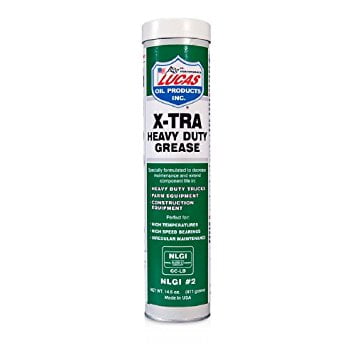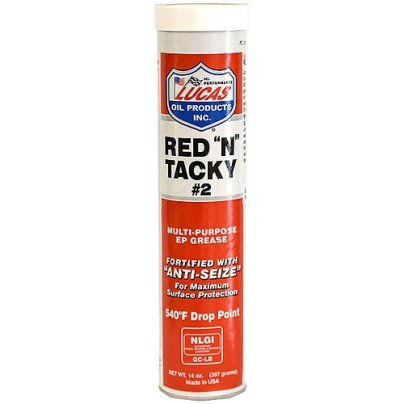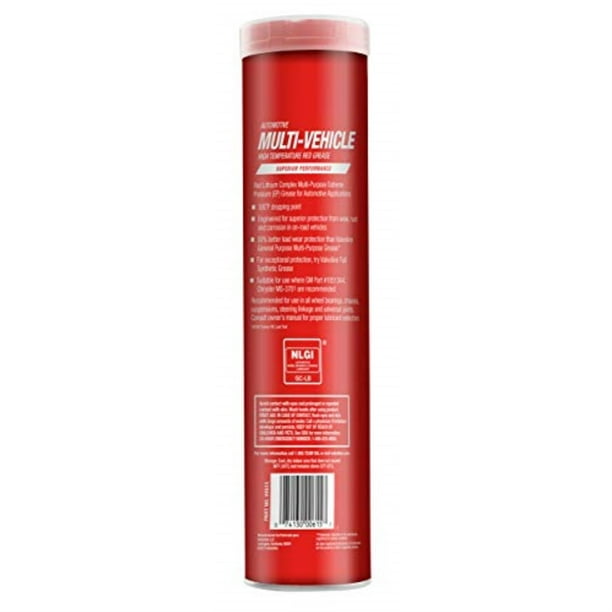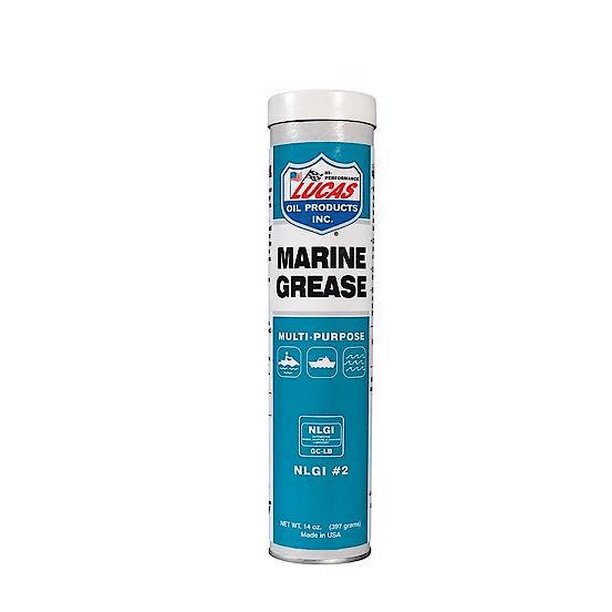We may earn revenue from the products available on this page and participate in affiliate programs. Learn more ›
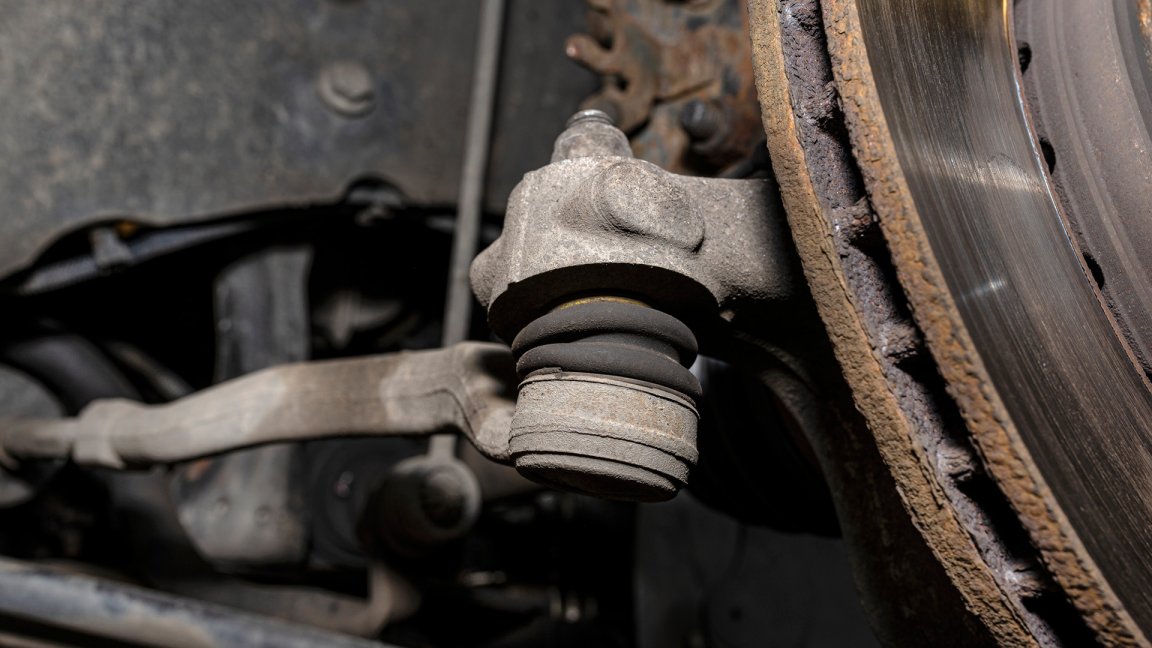
There’s quite a bit that separates one type of grease from another. If you want to get the most out of your vehicle, you do need to use the proper grease for the job. In other words, that grease you’ve been using to pack your wheel bearings might not be the best pick for the ball joints. Then again, it might be. You’re not here for riddles, though. You just want to know what the best grease is to keep those ball joints from getting in the fast lane to the scrap pile. You’ll get that answer, and we’ll give you a breakdown on what makes a grease good for ball joints.
Our Methodology
Unless you’re dealing with highly specialized situations, you really only need to stick to the basics when it comes to ball-joint grease. Still, the usual routine of doing the necessary homework was part of the selection process. For that, I visited a number of technical bulletins, forums and referred to what I’ve used around my own shop. It’s always wise to research things yourself, but I have come up with a list anyone can lean on.
Summary List
- Best Overall: Lucas Oil Xtra Heavy-Duty Grease
- Best Value: Lucas Oil Red ‘n’ Tacky Grease
- Honorable Mention: CRC Sta-Lube Moly-Graph Extreme Pressure Multi-Purpose Lithium Grease
- The Safe Bet: Valvoline High-Temperature Red Grease
Best for High Moisture: Lucas Oil Products Marine Grease
Best Ball-Joint Grease Reviews & Recommendations
Best Overall
Lucas Oil Xtra Heavy-Duty Grease
Check Latest PriceBest Value
Lucas Oil Red 'n' Tacky Grease
Check Latest PriceHonorable Mention
CRC Sta-Lube Moly-Graph Extreme Pressure Multi-Purpose Lithium Grease
Check Latest PriceThe Safe Bet
Valvoline High-Temperature Red Grease
Check Latest PriceBest for High Moisture
Lucas Oil Products Marine Grease
Check Latest PriceOur Verdict on the Best Ball Joint Grease
It’s hard to pass up Lucas Oil Xtra Heavy-Duty Grease. It’s an excellent product that can be used on ball joints in many other situations. However, the ever-so-slightly-more-affordable Lucas Oil Red ‘n’ Tacky Grease is just as hard to ignore thanks to its equally impressive performance on automotive applications.
What to Consider When Buying Ball Joint Grease
Here are three things you want to keep in mind. First, go with the manufacturer’s recommendation. Often, the manufacturer of the parts will tell you exactly what type of grease to use. Secondly, any grease is better than no grease. There are many different greases that are acceptable for use on ball joints in the automotive world. Even if the one you have access to is best used in another setting, it’s better to use it than to leave the joint dry. Lastly, don’t mix greases. If you’re using a different grease than what is in the ball joint, you want to do your best to replace as much of what’s inside as possible. That’s usually achieved by pumping until the old grease is displaced. Mixing grease can cause chemical reactions that are detrimental to their ability to perform. With that out of the way, let’s talk a little about what makes a particular grease acceptable for ball joints.
Types of Ball Joint Grease
Multi-Vehicle
When automakers design cars, it’s their job to figure out exactly which lubricants should be used. Just like an engine will want a particular oil, the same is true for chassis components and grease. You will often find a direct-manufacturer solution, but multi-vehicle greases are available and feature a specific blend of components deemed necessary by automakers. A blend will work for multiple makes and keep selection simple. However, when you opt to use aftermarket components, the automaker’s recommendations are no longer valid, and you should refer to the parts manufacturer for grease suggestions.
Multipurpose
Multipurpose grease is exactly what the name implies. It’s grease that’s able to be used on multiple parts of the vehicle thanks to the components used in development. In many cases, the designation as a multipurpose grease is an indicator that it’s safe to use on chassis components such as ball joints. However, it’s important to think critically of it before use to ensure it’s suitable for your exact project.
Marine
Marine grease is a blend specifically designed to deal with exposure to water. While all grease has some water-resistant properties, there is no replacement for marine grease when the components are regularly exposed to fresh or saltwater. Marine grease is usually a multipurpose blend and is intended for use on boats and trailers. However, it can be an excellent choice for off-road applications or vehicles that deal with excessive moisture. The biggest concern with doing so is that marine grease does not mix with lithium-based grease, making it essential to know what’s in place already and to replace it entirely if necessary.
Moly Reinforced
Molybdenum is a component used in some grease blends to offer additional protection to wear items. Some ball joints and disc-brake wheel bearings require this component, which is another reason why you need to refer to manufacturer recommendations to ensure you’re using the right grease. Moly grease is usually only beneficial to chassis components and is almost always a viable choice. It’s when you use it for other components such as drum-brake wheel bearings that you may run into issues.
Best Ball Joint Grease Key Features
NLGI Rating
Not all grease is the same, and the ratings attached to it tell us what it’s good for. When it comes to ball joints, you need to make sure you’re dealing with an NLGI #2 grease, which tells us that it’s the right hardness or consistency for the application. That NLGI grading is then going to be followed with GC-LB or just GC or LB. LB is the designation you’re looking for since it tells you the grease can be used for chassis lubrication. GC indicates it’s good for wheel bearings and axles, and the GC-LB simply means it can be used in both instances.
Compatibility
Again, any grease is better than no grease. However, if you want to get the most out of your parts, you should use the right tool for the job. If manufacturer recommendations or multi-vehicle greases aren’t available for your application, you will need to go with your better judgment. The top three products from the list above are going to serve the average motorist well. Even if you’re dealing with a specialty application, simply balancing the application, its use, and what’s available on the market is enough to get you in the right place for ball-joint grease.
Pricing
Ball-joint grease costs around $5 to $20 for a 14-ounce tube. For the most part, you only need to spend around $5 to $10 on a tube of ball-joint grease to get the performance automotive applications demand. Springing for a premium product is only warranted when you have a specialty application that requires a specific blend or simply prefer to use a premium product.
FAQs
You’ve got questions. The Drive has answers.
A: Different parts manufacturers recommend different intervals between lubrication of ball joints. You can’t over-lube them, though, so it’s good practice to grease them up during every oil change.
A: Color does and doesn’t matter when it comes to grease. Grease manufacturers often add coloring to the blend for quick references between the greases they offer, but there’s no real standard behind it. Pay attention to the rating and components used — not the color — to determine if the grease is good for ball joints.
A: Greasable ball joints have a grease fitting that a grease gun is attached to. Simply add the grease to the gun, hook it to the fitting and pump until the boot is full of grease. Not all ball joints have this fitting, though, so it’s important to check what your vehicle’s equipped with before proceeding.
